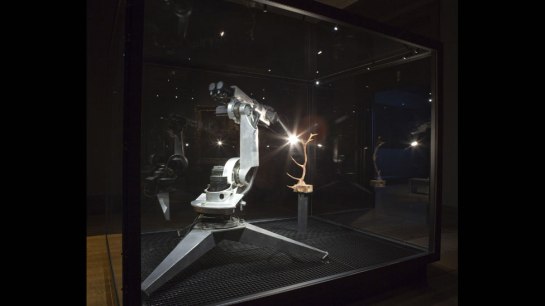
Peter Paul Rubens: ‘A View of Het Steen in the Early Morning’, 1636. Oil on Oak. 131 x 229.cm. National Gallery, London
Is your mobile a Black mirror or a spittoon?
18th century Romantic visitors to landscapes, looking for the Picturesque, used to put a Claude Glass, between them and the scene. The Claude Glass was a small tinted mirror, eg this one from the Victoria and Albert Museum, London, you turned your back on the landscape and held up the mirror.
Essentially the same effect as an Instagram filter, the curving on the mirror focused the reflection slightly to key points and the reduced tones gave the impression of a painting by the 17th-century French artist, Claude Lorrain; the famous ‘Master’ of the hazy and vaguely classical Picturesque view.

Claude Lorrain: ‘View of La Crescenza’, 1648–50. Oil on canvas, 39 x 58 cm. Metropolitan Museum of Art
Taking your Claude Glass, or Black Mirror, you either stood and appreciated the selected view over your shoulder or drew from the affected image. You used technology to remove you from direct perception to elevate you to the higher plane that was the point in choosing the view in the first place.
Taking photographs in the National Gallery is now allowed. Does taking photos with your phone, the most common method, change the way we look at art, another frame through which to look, another proscenium arch? Apart from shortening viewing or contact time with the art object, how does that process affect our perception of the thing/s we have come to look at?
Are gallery visitors with their mobiles constructing their social selves, taking images to post later? Probably not, Maybe the phone is a sort of spittoon, spitting out what you have chewed over and used up? Perhaps a slightly more active metaphor, a self sorting rubbish bin? Perhaps we are assuming the phone acts somewhat like the brain, we chuck everything in and hope that important experiences will somehow autonomously rise to the surface and claim their due significance. This process though, assumes that a painting is a signboard, like an advert designed to direct the viewer to a single message. But, paintings, like all art forms, work in layers and take time to understand.
It is difficult to just stand and look, it has taken me many years to learn how to just look at Het Steen for example. We need to feel that we are doing something active, are actively involved in our looking and need to have some sort of certified authority, a guidebook as it were, to lean on. You can see this in William Gilpin’s illustrations for his guide book: “Observations, relative chiefly to picturesque beauty, made in the year 1772, on several parts of England; – particularly the mountains, and lakes of Cumberland, and Westmoreland. (1788)”, look at how the format echoes the Claude Glass he recommended and how the tones are reduced to get the Picturesque effect. Most of the photographing visitors in the National Gallery use audio guides to get them to the best works.

William Gilpin: ‘Rydal Water’ from ‘Observations, relative chiefly to picturesque beauty, made in the year 1772, on several parts of England; – particularly the mountains, and lakes of Cumberland, and Westmoreland’, printed 1788.
Surely looking at a painting via the phone is doing much the same thing as standing with your back to the view and looking into a black mirror. Our phone photo not only makes a digital record of having been there, made our own postcard so to speak, but we have also digitised our presence in front of celebrity and wealth (art). In the same way that the Romantic viewer in front of Tintern Abbey or wherever, needed the Claude Glass to validate their own looking, we use the phone image to validate us in front of a famous painting.
Mostly Chinese/ Korean and Spanish tourists in the gallery this afternoon with a sprinkling of indigenous families, the children nobly doing their Christmas ‘duty’ whilst looking at their phones. I have done my duty to Het Steen, been an hour in front of the painting, perhaps a quick photo then it’s time to go.

Het Steen: viewing in progress











































